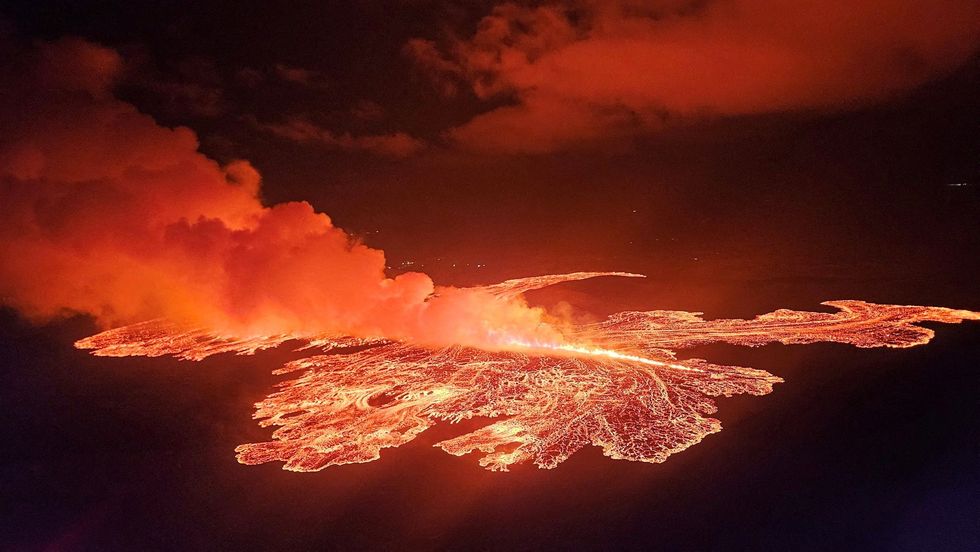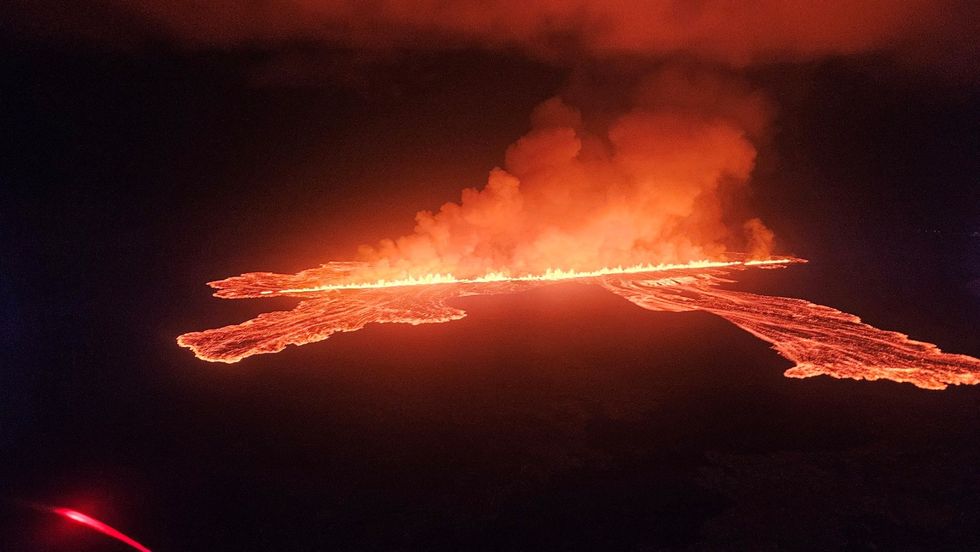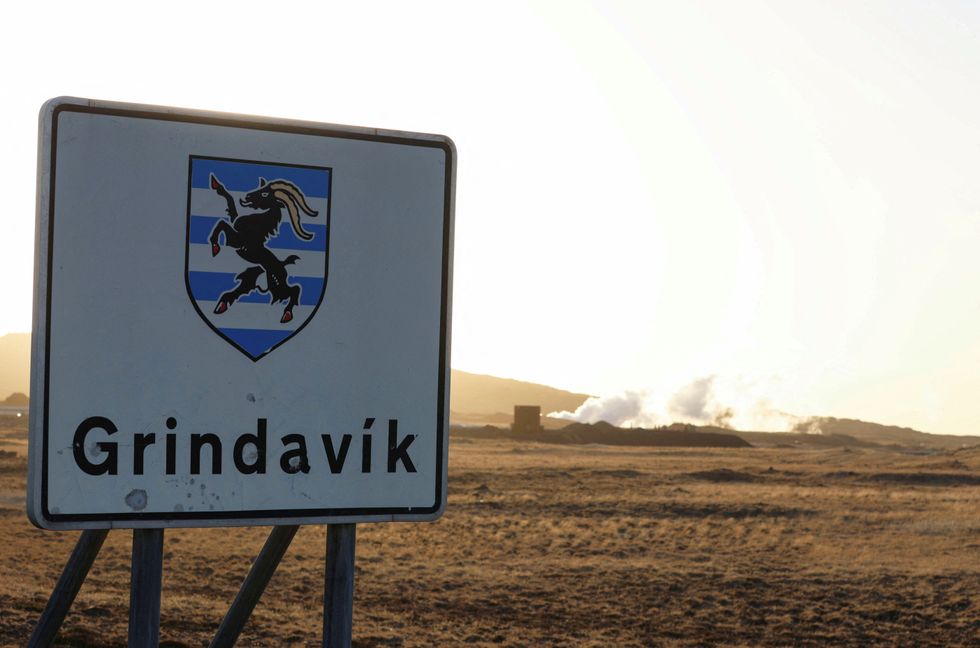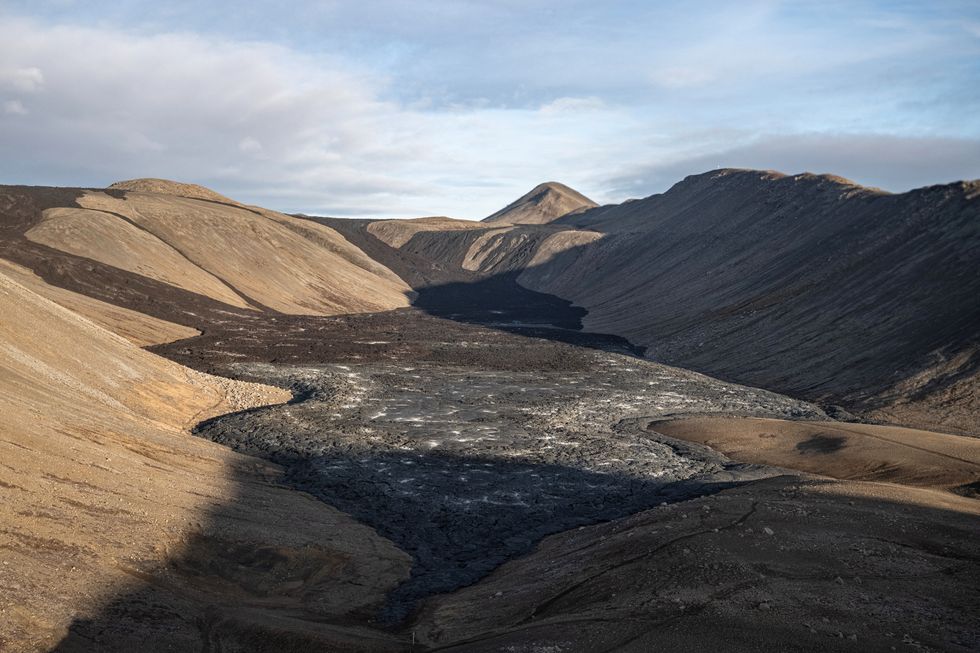A volcano in Iceland has erupted for the seventh time this year, prompting evacuation orders as lava spews out.
The eruption on the Reykjanes Peninsula sent streams of smoke and magma hurtling towards the airport, though there were no disruptions to air traffic.
According to the Icelandic Met Office, the length of the fissure is estimated to be approximately three kilometres (1.9 miles).
It began with little warning at 11.14pm, and continued for three hours before the weather office said that the fissure seemed to have stopped expanding.

A volcano in Iceland has erupted for the seventh time this year
Reuters
People living in 50 houses nearby were told to evacuate, as were guests at the popular Blue Lagoon spa resort.
The Blue Lagoon, a tourist hot spot, was empty at the time as the eruption started after closing hours.
Authorities have warned that the gas emissions coming from the volcano could impact the nearby town of Grindavik.
The town was home to nearly 4,000 residents before an evacuation order in December last year saw it becoming largely deserted.
MORE LIKE THIS:

According to the Icelandic Met Office, the length of the fissure is estimated to be approximately three kilometres
Reuters
The volcano last erupted in August, where a 2.4 mile-long crack opened up at the Sundhnukagigar crater near Grindavik. A state of emergency was declared by the police
The activity is estimated to be considerably smaller than the previous eruption three months ago.
“In the big picture, this is a bit smaller than the last eruption, and the eruption that occurred in May,” Magnús Tumi Guðmundsson, a professor of geophysics who flew over the fissure said.
Since January 2020, there have been 10 eruptions on Iceland’s Reykjanes Peninsula.

Authorities have warned that the gas emissions coming from the volcano could impact the nearby town of Grindavik
Reuters

The area near to the town of Grindavik has been a home of seismic activity
Reuters
The geological systems in the area had laid dormant for 800 years, but eruptions are now being recorded at a rising frequency.
Iceland sits above a volcanic hot spot in the North Atlantic and averages one eruption every four to five years.
The largest eruption in recent years occurred in 2010 at the Eyjafjallajokull volcano, which saw ash clouds spread across Europe and grounded 100,000 flights globally.